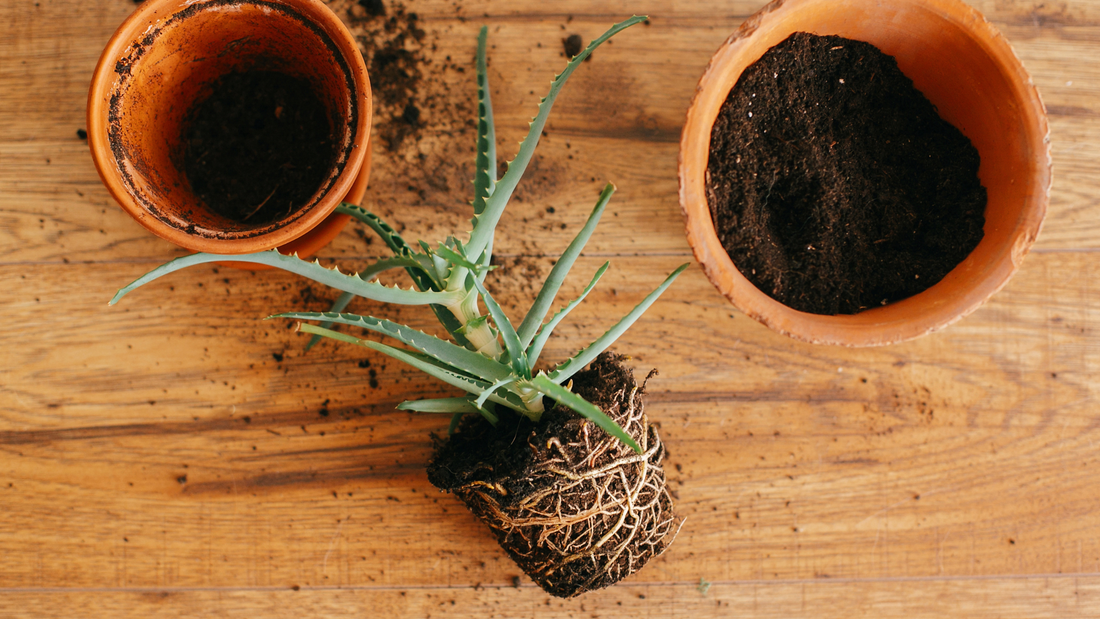As spring rolls around, it's time to show our indoor plants some love and attention. One essential task for maintaining healthy growth is repotting. Whether your plant has outgrown its current home or needs a fresh start, here are some of my favourite tips to ensure a successful repotting process:
1. Assess Your Plant: Before diving into repotting, take a moment to assess your plant's condition. Is it showing signs of being rootbound? Such as roots circling the pot's edges, or roots coming out through the drainage holes? Has it stopped growing or showing signs of stress? If so, it may be time to repot!

2. Choose the Right Pot: Selecting the correct size pot is crucial for your plant's health. Opt for a container that's slightly larger than its current one, 1 or 2 inches larger, to allow room for growth. If you can, ensure the new pot has drainage holes to prevent waterlogging, which can lead to root rot. If not, just be mindful of your watering.
3. Gather Your Materials: Before you start, gather all the necessary materials: a new pot, fresh potting mix, a shovel, spoon, or something for scooping soil, and some gloves if you prefer. Having everything ready will make the process smoother.
4. Prep Your Plant: Carefully remove your plant from its current pot, being gentle to avoid damaging the roots. If the roots are tightly packed or circling the bottom of the pot, gently loosen them to encourage outward growth. Trim any dead or damaged roots with clean scissors or pruning shears.

5. Refresh the Soil: Use a high-quality potting mix suited to your plant's needs. Consider adding perlite, orchid bark, or sand for extra drainage and aeration. Place a layer of soil in the bottom of the new pot, then position your plant in the center. Fill in the gaps with fresh soil, pressing lightly to secure the plant in place.
6. Water Carefully: After repotting, give your plant a thorough watering to help settle the soil and hydrate the roots. However, be cautious not to overwater, as this can lead to soggy soil and root rot. Allow the soil to dry slightly between waterings to prevent moisture-related issues.
7. Monitor and Adjust: Keep an eye on your plant in the days and weeks following repotting. Adjust your care routine as needed, ensuring your plant receives adequate light, water, and humidity to help it acclimate to its new home.
By following these detailed steps, you can ensure a smooth and successful repotting process for your indoor plants this spring. Remember, repotting is an essential part of plant care that promotes healthy growth and longevity.
Happy repotting, plant lovers!

